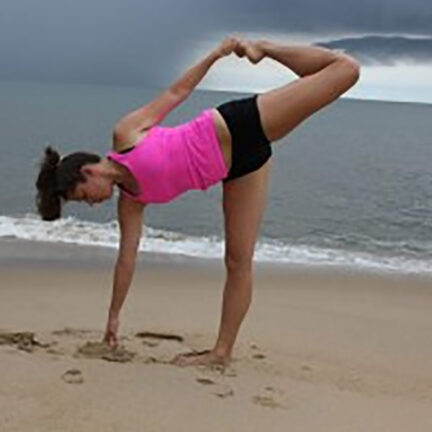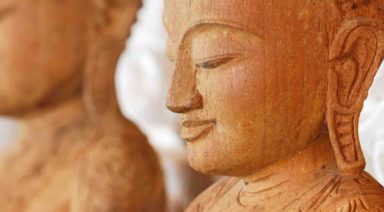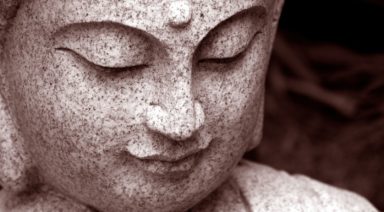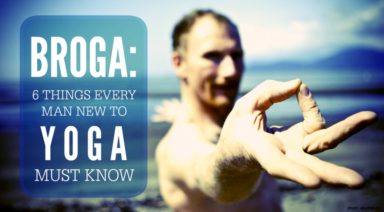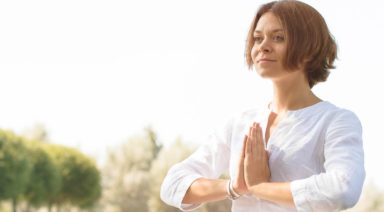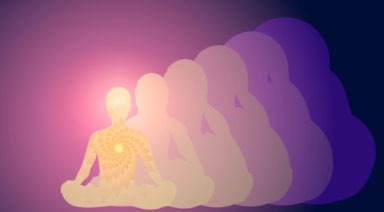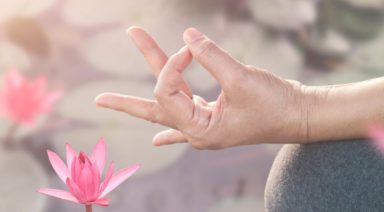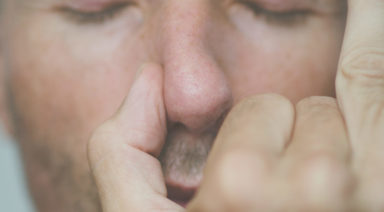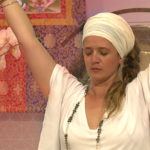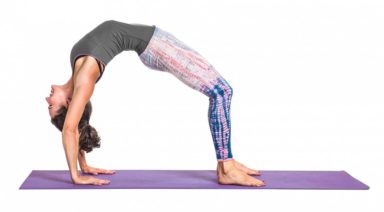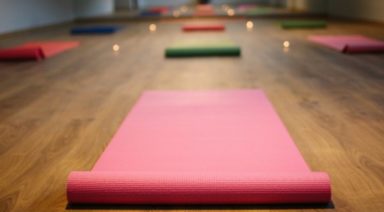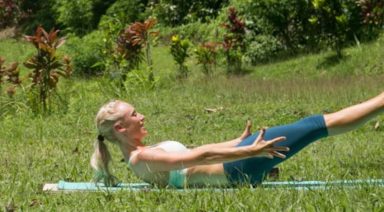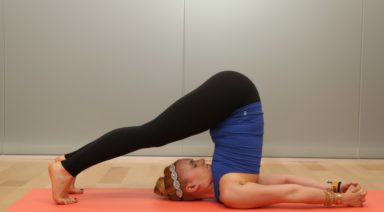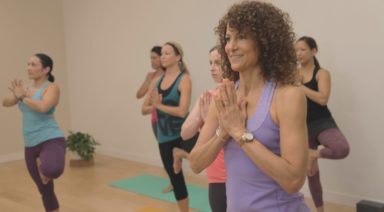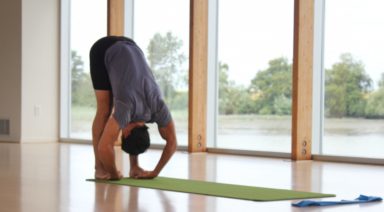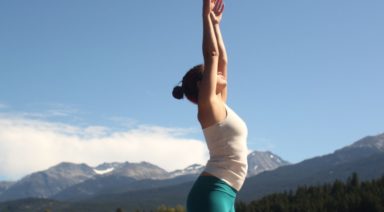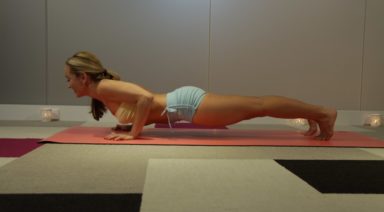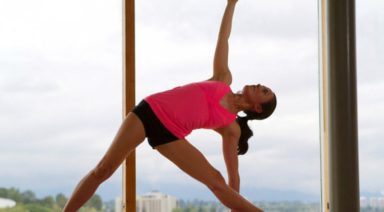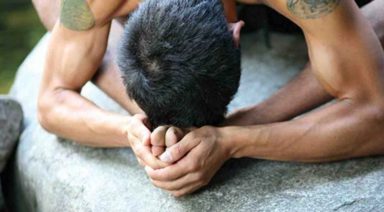Pranayama Breath Control: The Key to Maximizing Your Energy
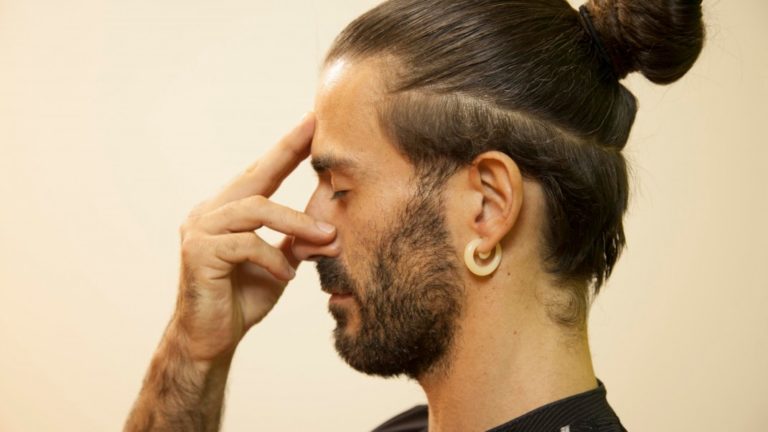
Yoga is an ancient practice that can take many different forms. From devotion, to physical movement, to the quest for knowledge, yoga is as unique as all of its various practitioners. Breath control has been and continues to be a large part of yoga. It is believed that breath control not only enhances clarity but, helps to restore the body’s natural flow of energy. In yoga there are more forms of breath control than you might imagine. The word pranayama can be broken down into two smaller words. The first word, “prana”, is the name for the life force or energy that flows through the body. The second half of pranayama is “ayama” which means extension or control. Alternately, the Sanskrit word “pra” also means before, or “to breathe”. This article will explore some of its forms, such as Samavrtti, Ujjayi, Kumbhaka, Anuloma Viloma, Kapalabhati, and Sithali. Although their names might sound complicated these breathing techniques are easy to practice and have varying degrees of mastery – much like yoga itself.
Samavrtti: The first type of breath control is the most normal and well known to every person that walks this Earth. Samavrtti in Sanskrit means “same action”. This is a steady even breath where the inhale matches or is equal to the exhale in duration. This is a slow and steady breath, the breath of relaxation. To begin practicing this form of breath control, inhale for four counts and then exhale for four counts. This action is believed to calm the mind and create a sense of balance.
Ujjayi: The next form of breath control is the most commonly practiced in yoga. Ujjayi breath means “victorious breath” in Sanskrit and is sometimes called the “ocean breath.” Ujjayi breath is an audible breath. This is formed by partially closing the epiglottal passage or slightly closing the throat. Much like Samavrtti, this breath is even. To practice Ujjayi close your mouth and breath in slowly and continuously for four counts. Exhale in the same manner, keeping the breath in through the nose. This form of breath control is said to help tone the internal organs, increase body health, improve concentration, and more.
Kumbhaka: This is the practice of holding one’s breath, which is where this form draws its name. Kumbhaka in Sanskrit means “to retain the breath”. Continuing to build on the pranayama previously described, begin with Ujjayi. Once you have established a comfortable rhythm, hold your breath for four to eight counts in between every four breaths. In the beginning your Kumbhaka or retention should start off shorter. As you become more practiced in this art, begin increasing the retention. Also one may begin to reduce the number of breaths in between the retentions. Kumbhaka is believed to strengthen the diaphragm, restore energy and cleanse the respiratory system.
Anuloma Viloma: This form of pranayama might look a bit funny to us Western practitioners of yoga but it is quite beneficial. Anuloma Viloma means Alternate Nostril Breathing in Sanskrit. Much like its name implies, practitioners use their right hand to alternate closing your different nostrils. The first step to learning how to practice this form of breath control is the Vishnu Mudra or hand position with the index and middle fingers curled. Lightly press your right thumb on the outside of the right nostril and inhale only through your left nostril. Keep your mouth closed. Close your left nostril with your ring finger and hold your breath momentarily. Release your thumb and exhale through the right nostril. Repeat the process inhaling through the right nostril. Start slowly with a low number of cycles and then progress from there. This form of breath control is believed to promote the flow of energy, as well as lower the heart rate and relieve stress.
Kapalabhati: Also known as “The Shining Skull,” this type of pranayama is a little bit different from those we have previously explored. Kapalabhati incorporates a rhythmic action by pumping your abdominal muscles on the exhales. Loosen up your abdominal muscles before beginning this practice. To begin, fill your lungs and then push all of the air out in a quick thrust. Inhalation automatically follows, creating this rhythm of breathing. Upon the exhale you have completed one cycle. When starting this practice begin with a low number of cycles or repetitions such as 10. Continue to build from there working up towards four rounds of twenty cycles of breath. This pranayama is thought to strengthen the diaphragm, restore energy and cleanse the respiratory system.
Sithali: Our final form of pranayama for this article, sithali, is roughly translated as “The cooling breath.” This form differs from other types of pranayama as the inhale is drawn through the mouth. Begin by curling your tongue and then slightly stick it out. Draw your breath in through your curled tongue, retain the breath closing your mouth and exhale through your nose. Repeat this process anywhere between five to ten cycles. This type of prana energy is believed to cool the body while providing a feeling of wellness.
**Contraindications: Some pranayama techniques such as breath retention or sharp, forceful breathing may not be safe during pregnancy.
**References: Much of this information comes from the wonderful resource of “Anatomy of Yoga” by Dr. Abigail Ellsworth
What is Pranayama?
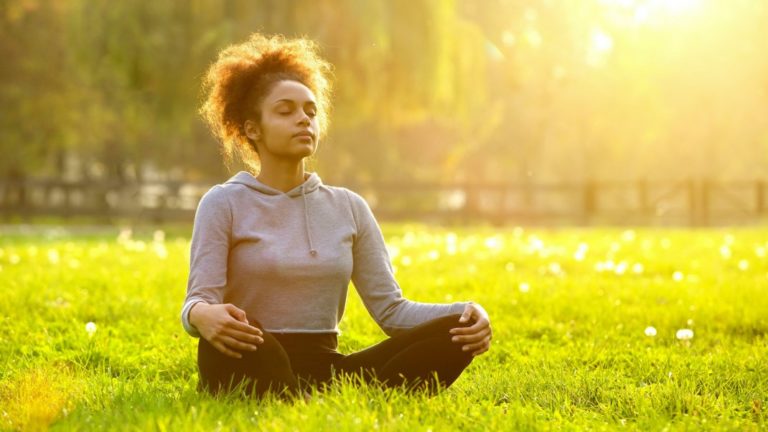
Yoga as a practice has ancient origins. The first textual mentions of the term can be found in the Rig Veda, which was written around 1500 BCE. While nobody knows exactly how old the practice is, some scholars believe that members of pre-Vedic societies practiced yoga even before that time.
The early yoga of the Vedas was much different that what we practice today. While many modern yoga practitioners have come to associate yoga with the performance of physical postures (asana), all of the earliest recorded texts on yoga hardly mentioned postures at all, and instead tended to emphasize the pursuit of liberation through meditation and pranayama practices instead.
What is Pranayama?
The word pranayama is a compound of two separate Sanskrit terms, prana and yama. The Atharvaveda, (one of the earliest Vedic texts on Indian medicine) states that prana is “the fundamental basis of whatever is, was, and will be.” Other texts often translate prana, as the “life force” or “vital energy”. The complementary term yama is often translated as “restraint” or “control”.
Pranayama then, is typically defined as a set of practices designed to control prana within the human body by means of various breathing techniques, meditative visualizations and physical locks (or kumbhaka).
The Sanskrit language is incredibly rich, and like many languages, one word can often have many different meanings. Some scholars, such as Harvard University Buddhist Chaplain Khenpo Migmar Tseten, prefer to separate the components of the compound into pran and ayama for the purposes of translation. When broken up in this way, pranayama becomes pran, (life-force), and ayama (which has the meaning of expansion or extension). In this case, the conjoined term pranayama takes on the meaning of “expansion of the life force”.
The Benefits of Pranayama
In his book Samadhi of Completion: Secret Tibetan Yoga Illuminations for the Quing Court, Fransoise Wang- Toutain states that “Prana is the driving force of all the functions of the body”, and that “the various functions of the body such as swallowing, digestion, and physical movement were all reliant of the efficient functioning of the prana within the body.”
According to Wang-Toutain (and the tenants of Indian medicine), the roots of all disease and mental imbalance can be traced to abnormalities and deficiencies in the body’s energy flow. In Wang-Toutain’s view, pranayama practices serve as a particularly powerful tool to heal illness and correct mental imbalances since “the control of breathing is the most direct method to affect life force.”
The History of Pranayama – A Timeline
The following timeline gives a general bird’s eye overview of the history of pranayama practices. Though this list is neither intended to be exhaustive nor comprehensive in its scope, it includes a small number of key texts that will be of interest to anyone who wishes to learn more about the history and practice of pranayama.
Brihadaranyaka Upanishad
(Circa 700 BCE)
While references to the the term prana can be found as early as 3,000 BCE in the Chandogya Upanishad, references to pranayama as a breathing practice do not occur until much later in yogic literature (approximately 700 BCE).
One of the earliest recorded references to pranayama as a breath related practice can be found in hymn 1.5.23 of the Brihadaranyaka Upanishad. Clearly linking breathing practices to the regulation of vital energy and life-force, the Upanishad states:
“One should indeed breathe in (arise), but one should also breathe out (without setting) while saying, “Let not the misery that is dying reach me.” * When one would practice that (breathing), one should rather desire to thoroughly realize that (immortality). It is rather through that (realization) that he wins a union with this divinity (breath), that is a sharing of worlds.”
No additional guidelines for pranayama practice are given in this Upanishad. However, the idea that breathing could be used to achieve greater health and even immortality is a theme that is often repeated in subsequent yogic texts and teachings.
The Bhagavad Gita
(Circa Fifth Century to Second Century BCE)
References to pranayama practices can also be found in the Bhagavad Gita, Chapter 4, verse 29. The text highlights the use of conscious inhaling, exhaling and breath retention to effect trancelike states. The text also suggests that the regular practice of pranayama can be used to enact greater control over the senses by “curtailing the eating process.”
The Maitrayaniya Upanishad
(Circa 4th Century BCE)
The Maitrayaniya Upanishad is an important text in the history of pranayama because it contains one of the earliest references to pranayama as a component in a larger, multifaceted system. Most likely composed centuries before the Yoga Sutras of Patanjali, this text enumerates yoga as a six-step process of breath control (pranayama), sensory withdrawal (pratyahara), concentration (dharana), meditation (dhyana), reasoning (tarka) and union (samadhi).
Specific references to pranayama practices can be found in chapter six, verse 21. The text states that deliverance can be accomplished by using a combination of breath retention practices and concentration on the sacred syllable Om in order to redirect prana into the body’s central energy channel (Sushumna).
Patanjali’s Yoga Sutras
(Circa 100 to 400 CE)
Most scholars agree that the Yoga Sutras of Patanjali are a compilation of texts from earlier yoga traditions. By the time of Patanjali, yoga as a system had continued to adapt and grow. The six-limbed system mentioned in the Maitrayaniya Upanishad had grown into eight limbed approach that included asana (physical postures) yama and niyama (social and ethical precepts) pranayama as well as four additional stages of meditative absorption (pratyahara, dharana, dhyana and samadhi).
References to pranayama can be found in verses 2.29 – thru 2.53 of the Sutras. While Patanjali does not go deeply into the nature of prana in these sections, he does detail four separate aspects of the breath: inhale, exhale and retention. In addition, Patanajali also makes reference to a fourth pranayama in sutra 2.51 that he claims surpasses or goes beyond the other three.
In addition, Patanjali notes a number of specific benefits of pranayama practice. These benefits include mental fitness and the ability to concentrate – a prerequisite to deeper states of yoga practice. Additionally, Patanjali states in verse 2:52 that regular pranayama practice could lessen or dissolve the veil that covers our “inner illumination.”
The Hatha Yoga Pradipika
(Circa 1500 CE)
Though traditionalists trace the roots of Hatha Yoga practice to the God Shiva, many scholars associate the founding of the Hatha yoga movement with the Maha Siddha Goraksha Nath. Widely associated with being the founding father of the practice, Gorakshanath is purported to have lived sometime between the 10th and 15th century CE. Numerous texts are accredited to him and his disciples.
One of the most important texts of the medieval era is the Hatha Yoga Pradipika, which was written by Goraksha Nath’s pupil Swami Svatmarama. Drawing from earlier systems, the text emphasizes the attainment of good heath and spiritual realization through a combination of physical postures, pranayama practices and meditative contemplations.
The Pradipika differs from some of the early texts in the history of pranayama, because it more fully details actual instructions for practice. These instructions include specific references to alternate nostril-breathing patterns, details on how to retain the breath, guidelines on auspicious times for practice and an overview of the various signs of progress in pranayama.
Further references to pranayama techniques can be found in a number of additional medieval manuscripts. The most important of these texts include the Gheranda Samhita (late seventeenth century) and Shiva Samhita (seventeenth or eighteenth century CE).
Pranayama Today
While most modern pranayama practices are based at least in part on their original counterparts, contemporary pranayama practices often include a number of additional variations on the basic breathing patterns found in the earlier texts mentioned in this paper.
Modern variants on the practice tend to integrate a combination of modern anatomical knowledge with more traditional yogic teachings in order to refine technique and better explain the physiological and psychological processes that occur when practicing pranayama.
The most notable example of this new approach to pranayama practices can be found in the book “Light on Pranayama”, by the the late B.K.S. Iyengar. A seminal text on modern day pranayama practice, Iyengar’s book is a must read for any student with an interest in the history of pranayama.
Where Should I Begin?
Pranayama practices are best learned under the guidance of a qualified instructor. Though not commonly known, many Tibetan Buddhist monks and nuns practice traditional Hatha Yoga pranayama exercises that can be traced to the 9th century CE. Many contemporary yoga teachers offer pranayama as part of their classes as well. This video on Gaia is a great place to start if you wish to begin the practice.
A Short Exercise for Home Practice
If you wish to begin practicing today, consider trying this alternate nostril breath from the Hatha Yoga Pradipika.
To begin:
- Come to a comfortable crossed legged position
- Block your right nostril, and inhale slowly through the left.
- Hold your breath for a few counts, and then exhale slowly through the right nostril.
- Block your left nostril, and inhale slowly through the right.
- Hold your breath for a few counts, and then exhale through the left.
Repeat the entire cycle for a minimum of seven repetitions. As you become accustomed to the exercise, practice for longer durations.
Practice notes: If holding your breath is uncomfortable at first, begin with very short breath retentions. As the practice becomes more familiar, gradually extend the length of the retention. Breath retention is contraindicated for expectant mothers.

